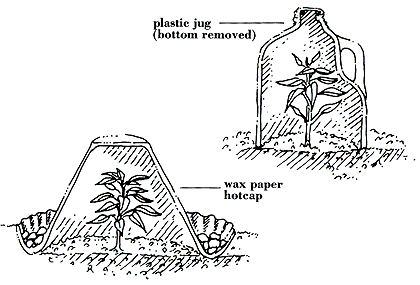To protect the seedlings from insects, wind and cold temperatures, some gardeners set miniature greenhouses, known as hotcaps, over each seedling. Hotcaps can be purchased at garden stores in the form of waxed paper cones, or they can be fashioned from glass or plastic jugs. The bottoms of the jugs are cut off, and the remainder of the jug is set over the plant and pushed into the soil. The only problem with hotcaps is that on warm, sunny days they can hold so much heat they can cook the seedlings. So, they must be removed during the day and replaced in the early evening.

One of the most common weeds in the pepper garden is volunteer peppers from the previous year’s fallen pods, which proves that direct seeding works. The technique is mostly used by commercial growers with acres of pepper plants who don’t want to bother with raising transplants.
Direct seeding can be used by the home gardener. However, the technique is not recommended for climates with short growing seasons. The seed should be planted no more than one-half inch below the soil surface, and the row or grouping of peppers should be carefully marked to identify the variety later.
Latest posts by Dave DeWitt (see all)
- Enchiladas Verdes con Chile Pasado - 02/08/2023
- Smoked Oysters with Ancho Chile Sauce - 01/13/2023
- Machaca Sierra Madre - 01/11/2023








